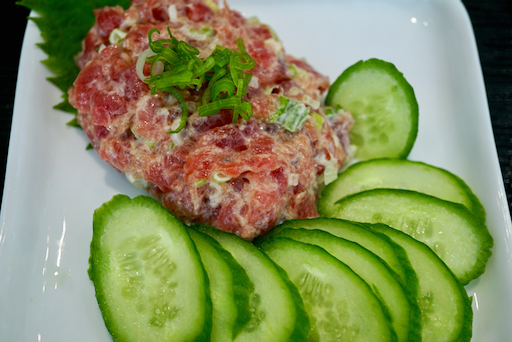Ingredients:
200 grams lotus root, peeled and grated, moisture drained out naturally
300 grams tofu, moisture drained
3 tbs Potato starch
1/2 tsp grated ginger
1 tsp miso (original recipe calls for 1/2 tbs soy sauce, I used miso since the dough was bit runny)
Flour for dredging.
Oil for deep frying.
Directions:
Add the grated lotus root, tofu, potato starch, ginger and miso and mix well until smooth. Add more starch if too watery/soft.
Using the ice cream scoop, make equal sized balls, dredge in the flour and deep fry at 160-180F oil for 3-4 minutes turning a few times until the outside is nicely brown (picture #2).
Initially, I served these hot but it can be heated up nicely in the toaster oven. It is seasoned but you could add soy sauce with grated ginger or some type of hot broth. If I make this again I could add chopped scallion, cut up shrimp, ginko nuts, mushrooms etc to make it more interesting.
A few days later, I tried to make a dish (soup) with the leftover renkon balls (picture #3). I made this for lunch. I made it a few hours ahead and re-heated just before serving. The idea was good but the execution was not so great. While the renkon balls were sitting in the broth they absorbed the broth and mostly disintegrated as you can see in the picture #3. It still tasted good.
This is mostly leftover control and there is no recipe but this is how I made it.
Ingredients: (for the soup)
4 Renkon balls, cut in half
Half package of brown shimeji mushroom, root end removed and separated
1 inch daikon, peeled and drained
1 spring onion, finely chopped
Cooked udon noodle, amount arbitrary, this was leftover
For broth:
2 cup Japanese broth (from dashi pack)
1 tbs each of sake and mirin
1/4 cup of x4 concentrated Japanese noodle sauce (or taste)
Directions:
Add the ingredients for the broth in sauce pan and heat to simmer
Add the grated daikon, renkon balls and mushroom and simmer.
Add the noodles and scallion
Serve while hot*
* as I mentioned, I made this ahead of time and reheated before lunch. That was a mistake, the renkon balls absorbed the broth and mostly disintegrated. Nonetheless it tasted good and the addition of grated daikon added flavor and cut the oily taste from the renkon ball.


















































